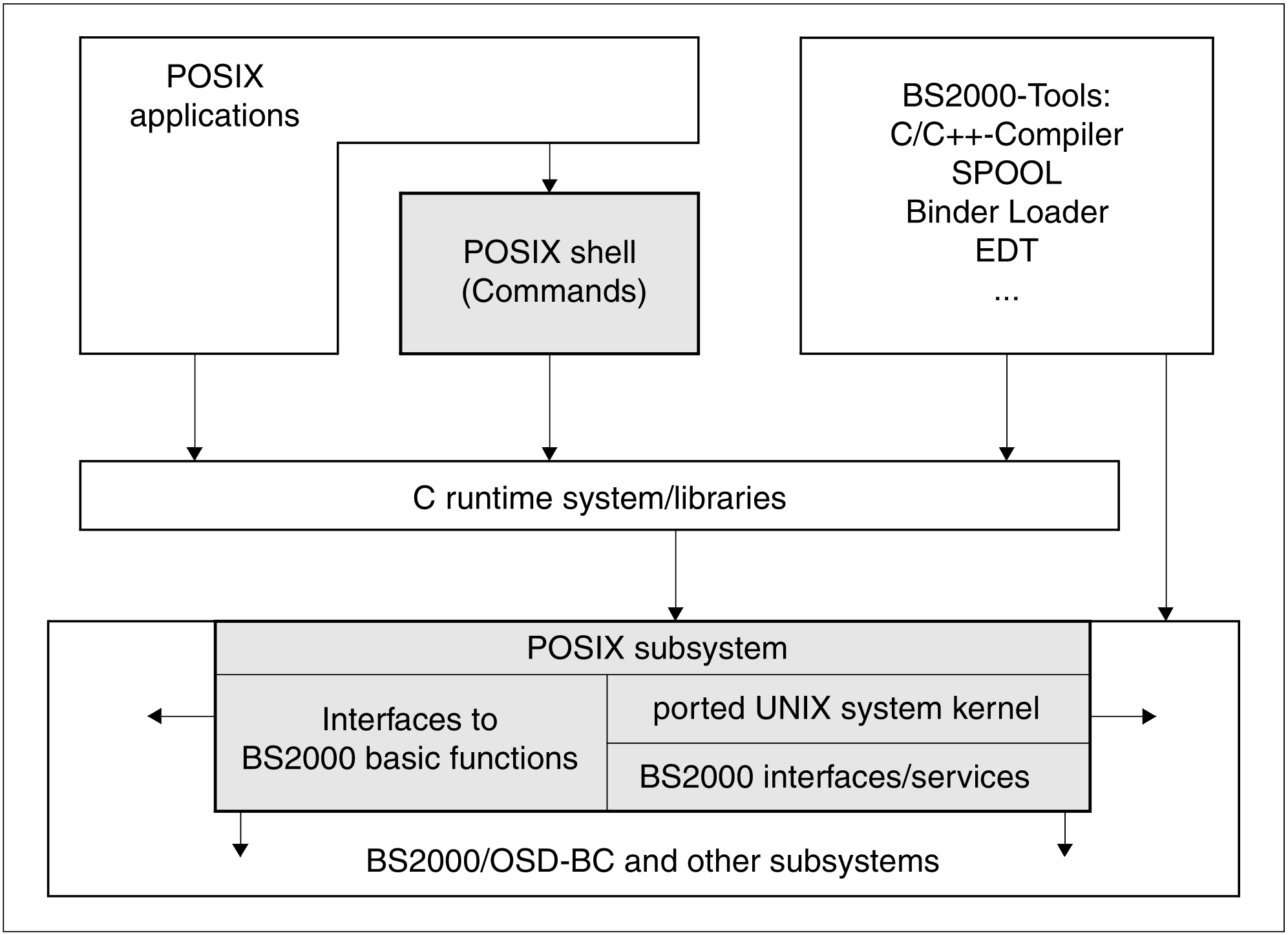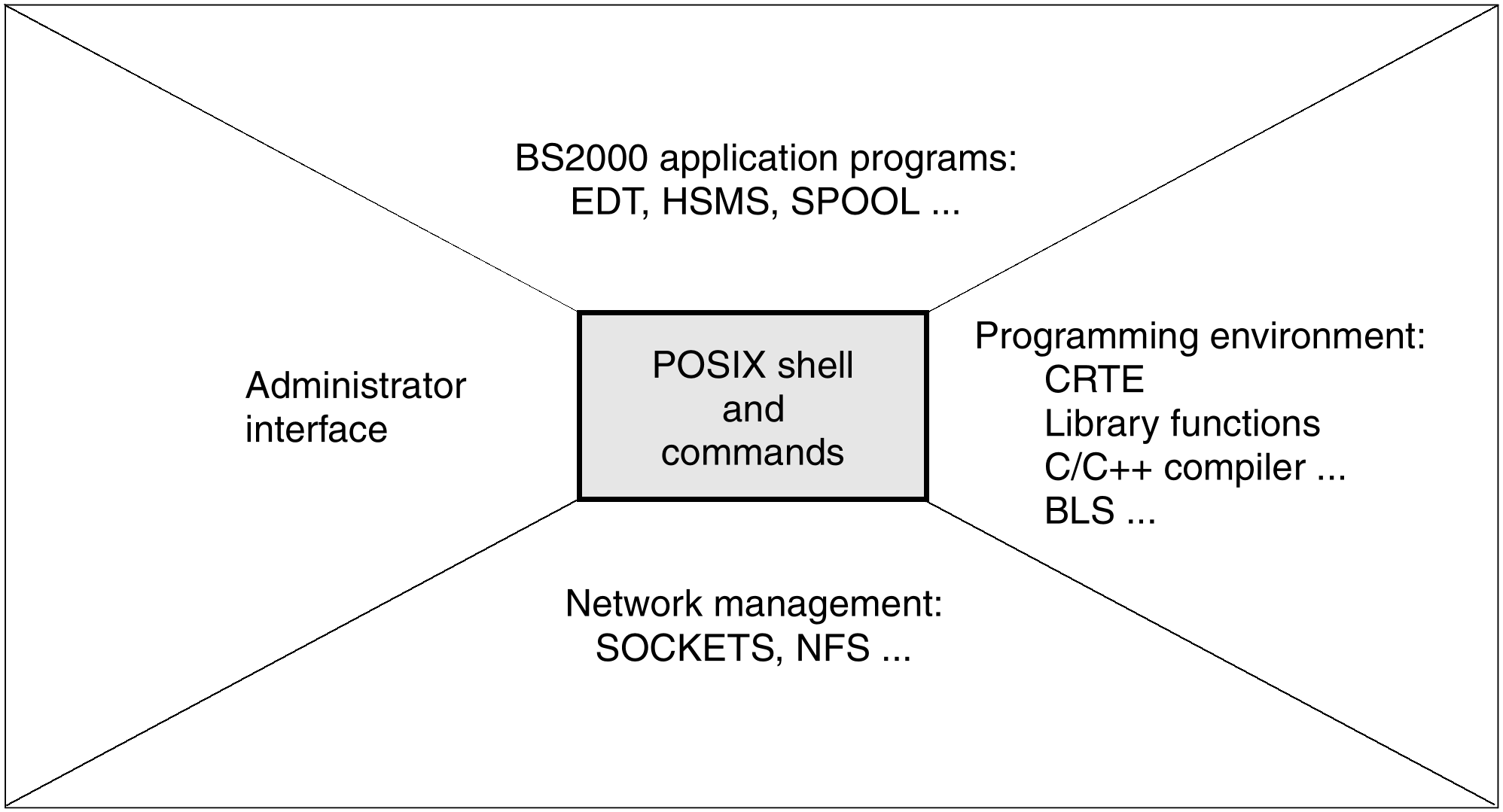The POSIX shell is the interface which links you to the POSIX subsystem via the C runtime system/libraries. The following diagram shows the structure of POSIX in BS2000 and the embedding of the POSIX shell.
Figure 16: Structure of POSIX in BS2000 and the embedding of the POSIX shell
The POSIX shell is a command interface which you can use in addition to the BS2000 command interface (see figure 17).
All the POSIX shell commands are available to you once you have successfully accessed the POSIX shell (see "Accessing the POSIX shell "). You can begin to enter BS2000 commands again once you have exited the POSIX shell.
Figure 17: The command level POSIX shell in the POSIX subsystem
The POSIX shell reads commands from a terminal or from a POSIX file, interprets them according to specific rules and executes them. A file which contains commands for the POSIX shell is called a shell procedure (shell script).
The operation and performance of the POSIX shell depend on whether the terminal at which the user is working is a block terminal or a character terminal.
The POSIX shell offers you a comprehensive command language which can be applied as a programming language. You can use the available commands to create your own programs and execute them without compiling them beforehand.


